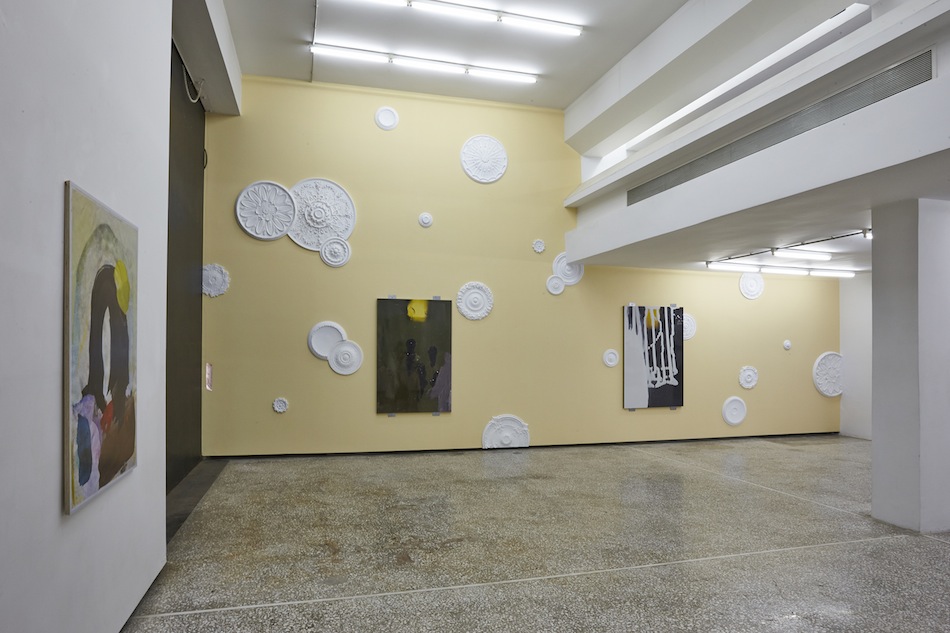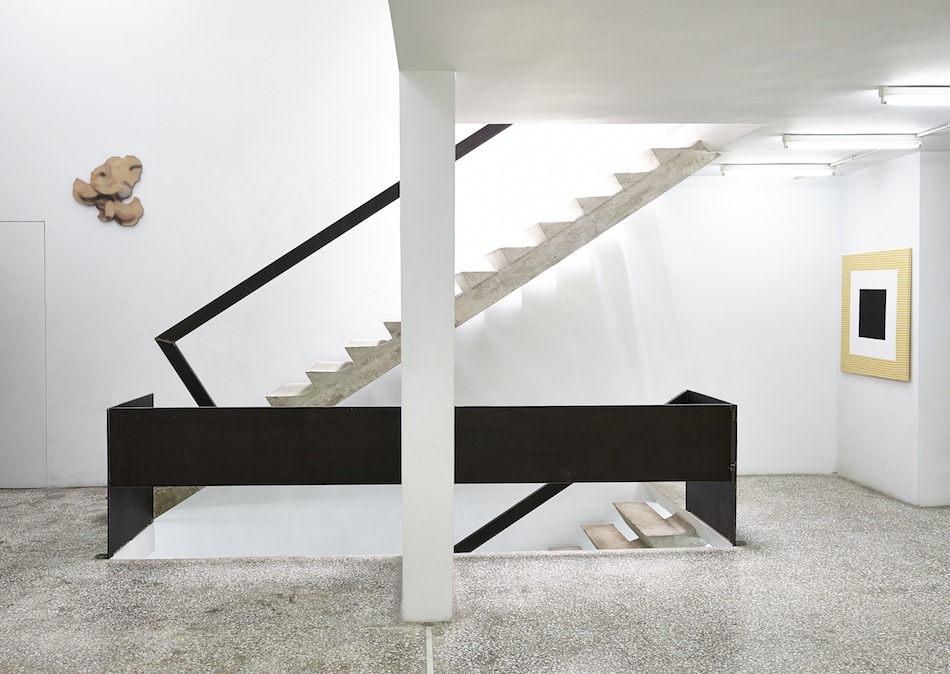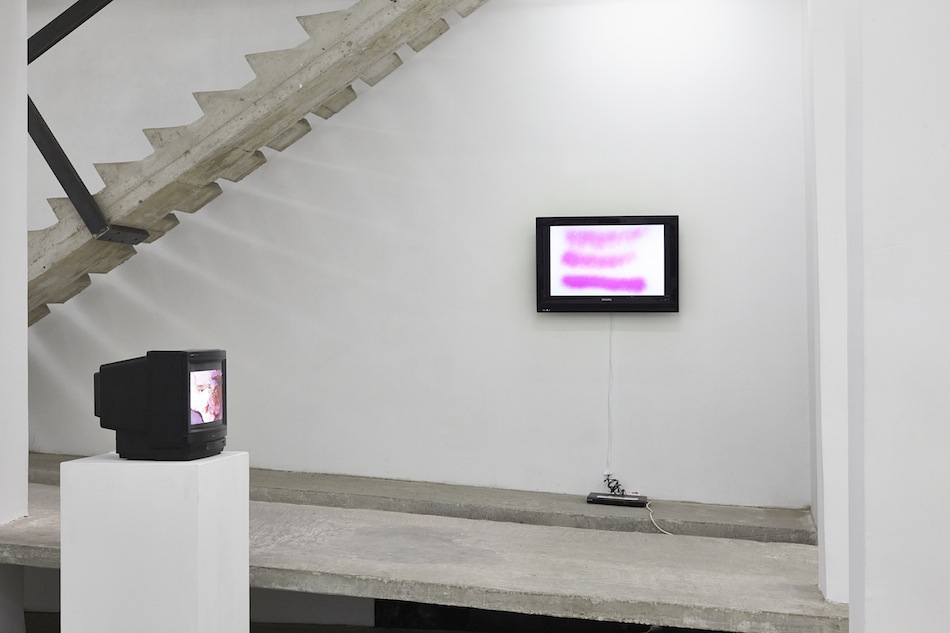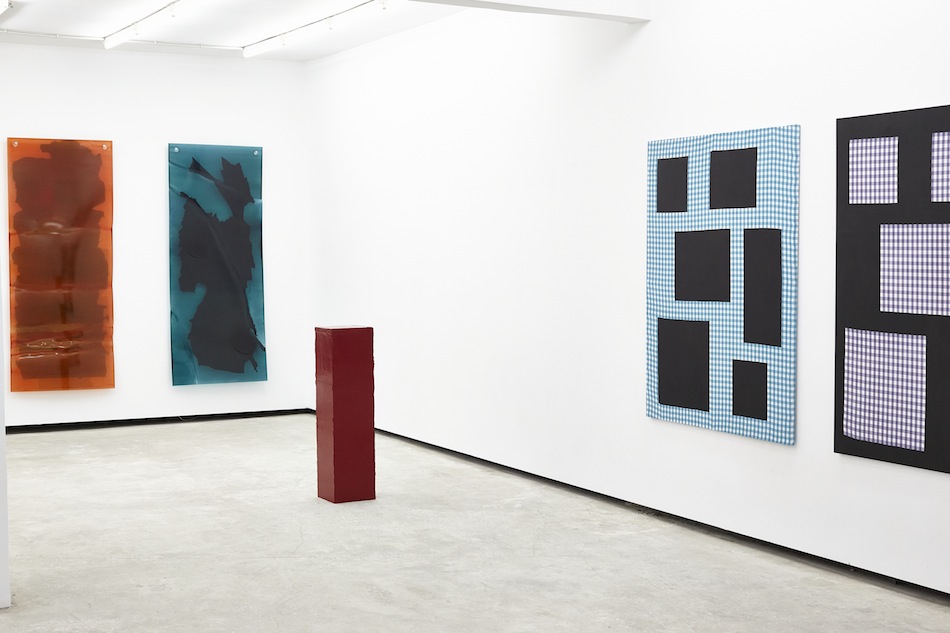Group show curated by Frédéric Bonnet
Fresh painting, French painting
May 28, 2015–July 31, 2015The Breeder, Athens
Participating artists: Nicolas Chardon, Isabelle Cornaro, Bertrand Lavier, Olivier Millagou, Pascal Pinaud, Jérôme Robbe, Julien Tiberi, We Are The Painters
Approaching painting through its sidelines, that is the essence of this exhibition.
The invitation made by The Breeder gallery to present French artists in Athens couldn’t be translated into a «French» exhibition, especially since this characterization is nowadays of little importance for a nation that is not an emerging one in the globalized world. It became thus a necessity to work on a generic idea, but instead of a narrative or theme, it felt more relevant – especially now that it is very much in fashion everywhere – to work on the notion of painting itself; especially from the French side, a country that towards the end of the 20th century had a very ambiguous even complex relation with painting. In general, from the 80s until recently, painting was considered outdated if it wasn’t reactionary. At the same time innovative movements like Supports/Surfaces, which was recently re-discovered and was basically suggesting a form of deconstruction of painting, was at the time very little understood abroad.
Without being classified within a historical perspective, this exhibition focuses more on a young generation of artists that are not painters as such, but they all adopt various and enthusiastic strategies about painting, without indulging however in the forms and materials of classical painting. So acrylic paint on a stretched canvas is excluded. In the contrary what is welcome are works that use the matter of painting and develop questions in regards to its conception. The result is works that overflow the limits of the canvas or in the contrary works with shapes that identify or resemble paintings, but their essence doesn’t stem from any painting material. So eventually a Fresh Painting is created, in direct contact with reality.
Bertrand Lavier is, in this case, a rather titular figure, having from the beginning of his career in 1969 grappled with the problematic of the many identities of the medium of painting. His painting Rue du Pont-Louis-Philippe (2012) belongs to a series which reproduces, through the use of inkjet on canvas, photos of store-fronts covered in whiting, albeit with a very expressive gesture that doesn’t fail to introduce ambiguity as to its nature. The same ambiguity characterizes his Bloc de peinture rouge (1986), made of pure acrylic paint: paint therefore that in this case, has become a sculpture.
Pascal Pinaud, whom the critic Thomas Golsenne has qualified as a “Serial painter”, ceaselessly revisits the “grand art” thanks to the use of objects and gestures born from popular culture. Thus, his Rosaces (2003) revisit the argument of decorative art, with those elements typical of the interior of bourgeois Parisian houses, while the Test’art that accompany them are photo close ups of the paint found on car bodies.
It is with simple coloured cloths – more often Madras or Vichy cloth – that Nicolas Chardon chooses to come to grips with exercises in classic composition of elementary forms, reminiscent of avant-garde movements. Nevertheless, tradition finds itself hostage to the principle of reality and ends up roughed by the deformations imposed by the tightening of the textile on the stretcher.
In the installation of We Are The Painters (the duo of Nicolas Beaumelle and Aurélien Porte), it is more the idea of conception, of construction – or is it destruction? – and of even the possibility of painting itself that is explored, in particular through the figure of the muse, at the same time archetype of inspiration and potential motif. In this exploration of painting-in-the-making, which addresses the problematic of classical genres and decor, painting is never the only medium in play.
For Olivier Millagou, painting is just a useful alibi in the development of an illusion of the exotic. Conceived as both paintings and elements of a potential installation, his Sand Paintings are composed with real white sand collected from a beach and associated with supports made of wood, whose outline follows the exact and real contour of far away, and thus fantasized, shores, copied from Google Maps.
On the other hand, painting is for Jerôme Robbe a real subject of reflection. The artist nonetheless works at thwarting codes and usages through experimentations which accept the haphazard and the accidental, in a process of constant research. His series, Draps, is thus made out of plates of thermoformed plexiglass coated with glazing of coloured varnish, the drawing emerging randomly from the act of tearing away the scotch tape used to protect the material.
Although he is far more known for the variety and the brio which characterize his occupation as a drawer, Julien Tiberi has recently attempted to turn his hand to the pictorial exercise. He does this through his use of the informal, meaning elusive forms based on photos whose content is never revealed, as they are blurred through the use of Photoshop. The result is a perpetually intriguing image, while the technique which gives rise to the painting remains just as ambiguous.
Isabelle Cornaro is also not a painter, but she fell into the habit, while working on new sculptures and installations which can sometimes conjure an idea of painting, of realising small films characterized by a minimal cinematographic grammar; interior compositions pictorially thought out, which assume a bond with the canvas, and even with the genre of still life in the case of objects.
-Frédéric Bonnet
with the kind support of: Ambassade de France en Grèce and Institut Français en Grèce




